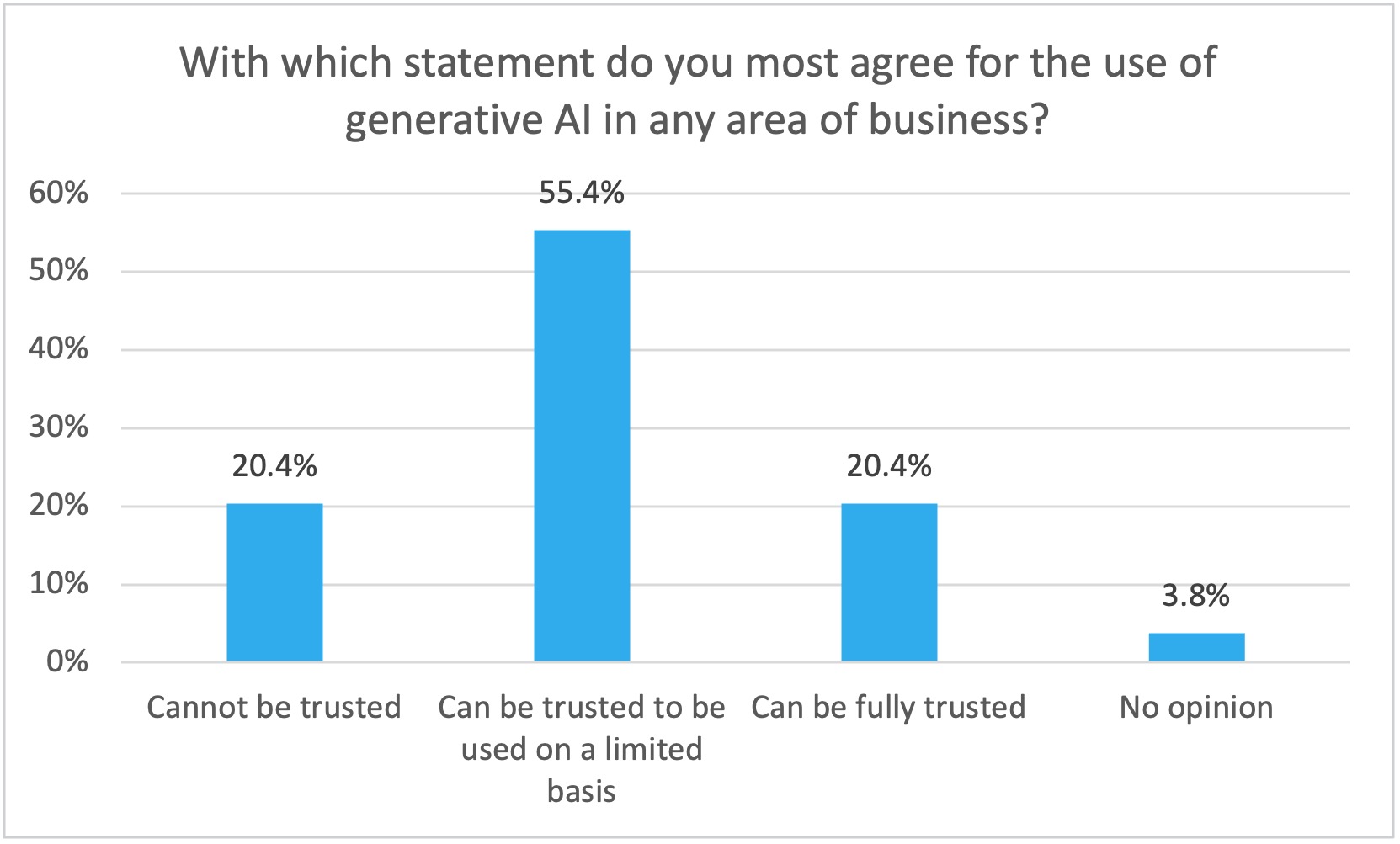The steady drumbeat around generative AI continues as employee experience, customer experience (CX), and workplace collaboration providers lay out their visions and product plans for the technology. Their messaging appears to be falling on eager ears, as evidenced in findings from a recent Metrigy study with CX, technology, and other business leaders at 641 companies.
Understanding of Generative AI is Increasing
For one, less than 15% of study participants said they had little or very little understanding of generative AI, which, for clarity here, is a category of techniques and models that respond to natural language prompts to produce text, images, audio, code, or other media from data that they’ve been trained on. As I wrote previously on WorkSpace Connect, examples of generative AI use cases are plentiful, for all sorts of employees: writing emails, creating marketing campaigns, turning spreadsheet data into presentation graphics, summarizing customer interactions, scheduling meetings among team members, creating employee surveys and capsulizing results in an executive report, and so on.
A slightly greater percentage of our study participants, 20.4%, classified themselves as having a novice-level understanding of generative AI—meaning, they have limited knowledge about the technology, how it works, and how to use it, but they are learning. The greatest portion by far, 65%, said they have an “expert” understanding, with substantial and in-depth knowledge on how generative AI works and how to use it.
Trust in Generative AI Also Increasing
In other words, most participants have been brushing up on generative AI, some quite substantially. And while there are concerns, such as data leakage, the majority of participants said they agree that generative AI can be either fully trusted (20.4%) for use in any area of the business or trusted on a limited basis (55.4%). Limiting the data the generative AI tools can use to create content is the top way to increase trust, cited by 55.9% of participants. Next, for 50.9%, is having human oversight of content creation. And a third said limiting generative AI capabilities will increase their level of trust.
Products Built to Foster Trust
Providers are crafting their product lines with trust in mind. Earlier this month, for example, Microsoft introduced a business version of Bing Chat, its generative AI tool for Web search announced earlier this year. This tool, called Bing Chat Enterprise, addresses the worries enterprises might have about their intellectual property or other sensitive data inadvertently or, worse, deliberately, put into the public sphere because of an employee’s use of a generative AI-fronted Web search engine.
Like its consumer counterpart, Bing Chat Enterprise uses Web data to answer questions that employees pose within the chat interface. The answers, which can be text, images, graphics, or a combination, come with citations for verification. And, to address those data privacy and security concerns, Bing Chat Enterprise wraps this up in a protective layer: No chat data is saved, the chat data is encrypted in transit so Microsoft has no access or visibility to it, and the data isn’t used for training the large language models used by the generative AI.
Bing Chat Enterprise is not to be confused with the Microsoft 365 Copilot and Business Chat generative AI capabilities I wrote about a few months back. Rather than using Web data, these are grounded in a company’s own data from Microsoft apps in the 365 suite, including Excel, Outlook, PowerPoint, Teams, and Word. They inherit the data privacy and security protections that companies already have in place for their Microsoft ecosystem, although a review of those would be a good idea to make sure they’re sufficient in this new era of generative AI.
Eyeing Productivity Gains
This is just one example of how one provider is forging ahead with generative AI. There are many others, and business leaders would be remiss in not exploring what their current or potential vendors are doing with this technology. There’s just so much potential here in streamlining the mundane and time-consuming tasks that bog down an employee’s day, such as in creating content, whether that’s an email, a call summary, a presentation, or whatever.
For participants in Metrigy’s study, that’s the biggie. Forty percent said that held the greater potential value for their organizations among all the various ways generative AI could come into play.




